
After living in Japan for a while, chances are you’ll be handcuffed to these new habits.
If you’ve spent time in Japan, then you may have noticed that your friends and family look at you a little funny when you come home. And it’s not because of your awesome new shirts with incomprehensible English written it on them, it’s because of the new little habits that you’ve picked up.
This has personally happened to me a bunch of times, and it usually takes a while for me to remember that, yeah, these new habits of mine weren’t things that I did before I went to Japan.
That’s why today we’re counting down the top five hardest Japanese habits to break. If you do any of these, then chances are you’ve spent some time in Japan before.
So let’s get to it! Starting off with…
Honorable Mention: Table manners
What is considered “appropriate” behavior at the table varies from culture to culture, but one thing that many Western countries don’t approve of is slurping and picking up your bowl to your mouth to drink soup.
But in Japan, slurping and bowl-picking-up are what you do in order to be polite!
While I personally never quite picked up the slurping habit, picking up the bowl to down the broth from ramen or udon is something that, only with a lot of reflection, I realized I never did before I went to Japan. Before I was enlightened, I used to always just use a spoon to scoop it up, bit by bit.
▼ How inefficient!
When you're eating #ramen, use the spoon only in the beginning to taste the broth. pic.twitter.com/TsxqBTNBLq
— Furious Spoon (@FuriousSpoon) June 18, 2015
Of course, because ramen and other Japanese foods are eaten all over the world, some people may be introduced to the Japanese way of eating them outside of Japan, thus making this only an honorable mention.
But still, anyone who has lived in Japan for an extended period of time will tell you that the only way to truly enjoy a bowl of ramen is to slurp up the noodles, then drink the broth. Anything else is just a waste.
#5. Actually obeying crosswalk signals
Hey! A habit that’s good to pick up!
We’ve seen before that crosswalk signals are part of the nicest sounds in Japan, perhaps adding to the reasons why people actually obey them.
I don’t know what it’s like in other countries, but in the U.S., crosswalk signals are generally seen as little more than a suggestion. If there are no cars immediately coming, then most Americans would just hop across the street, even with a red crosswalk signal.
In Japan though, I have never once flouted a crosswalk signal. I feel like the reason for this is because in Japan, waiting for crosswalk signals is just something that people do. When a whole group of strangers are patiently waiting for the green signal, you don’t want to be the only weird one running out into the road.
▼ Safe crossing is also something Japanese children learn at a young age,
and you sometimes see flags for kids to hold up as they cross the street.
阪急苦楽園口駅前には、黄色い横断旗がある。こんなの、久しく見てなかったよ。 pic.twitter.com/iaYHGNkgZs
— asakaho luis ryuta (@luis0117) December 5, 2016
This habit of waiting for the signal then carries over whenever I go home, and my friends laugh at me for obeying the signal like a chump. To this day I can’t cross the road with the red signal still up without feeling extremely uncomfortable.
#4. Mouth sounds
Even if you don’t manage to pick up the Japanese language while you’re in Japan, one thing you’re bound to pick up are Japanese people’s mannerisms while speaking.
And two of the most popular are: “heee” and “teeth-sucking.”
We’ve seen these sounds before in the top five most annoying sounds in Japan, but despite how annoying some may find them, you can’t argue with the fact that they’re everywhere… and extremely easy to pick up yourself.
For those unfamiliar, the “heee” sound is used to express anything from the mild surprise of “oh really?” to the life-changing shock of “oh my god I hope you’re joking!”
▼ Skip to 1:10 for a good “heee” explanation,
and to 2:50 for a barrage of “heee?!”
As for the “teeth-sucking” sound, to make it yourself, clench your teeth together, then imagine you just saw someone scrape their knee and react appropriately.
▼ Listen to the sound in action here, though in Japan
it’s often used to denote thinking hard about something, not just pain.
Since both of these “mouth sounds” are are used in different situations than in Western countries, using them outside of Japan can lead to some awkward situations.
Saying “heee” to someone for anything less than Earth-shattering news may come off as sarcastic, and “teeth sucking” when you’re thinking hard about something will just get you confused looks.
▼ “Dude, is something wrong?
You keep making a sound like you scraped your knee.”
#3. Covering your mouth while laughing
The mouth habits don’t stop! Covering up your mouth is fairly common in Japan, whether you’re doing it with a surgical mask or your hands.
While many cultures outside of Japan couldn’t care less about seeing the inside of someone’s mouth or their teeth, Japanese people (and especially Japanese women) prefer not to show off their mouthy innards while laughing.
▼ The difference between the American “horse laugh” (showing off your teeth)
and Japanese “feminine laugh” is explained and shown in more detail here.
Since laughing is a fairly common occurrence — taking into account all funny laughs, awkward laughs, and “please go away before I murder you” laughs — this is an easy habit to pick up. The only issue is, it’s mostly a women-only thing, so if you’re a guy and pick it up, you’re going to look a little strange, even in Japan.
▼ Although if your goal is to look as kawaii as possible,
this tweet says you’re headed in the right direction.
And when you go back to your home country where, presumably, people don’t usually cover their mouths when they laugh, it will come off as even stranger.
Whenever I cover my laughs back home in the U.S., people think I’m acting fancy, like a Victorian-era lady having tea in the garden. But no, I’m not trying to be fancy, I’ve just picked up a ladylike habit from Japan that won’t go away.
▼ Besides if I was a Victorian-era lady and had good teeth, you can bet
I’d go out of my way to show off those chompers when I laughed!
#2. Bowing all the time
Most people know that bowing is a part of Japanese culture, used like a handshake or as a way to apologize.
But those who have been to Japan know that the handshake/apologizing form of bowing is only a small part of all bowing. The rest consists of:
- Bowing intermittently while talking to someone to show you’re listening
- Bowing while on the phone with someone to show you’re listening
- Bowing when saying hello to someone as a greeting
- Bowing when a car stops for you at a crosswalk as a thank you
- Bowing when you’re in a car and another driver lets you go first
- Bowing pretty much anytime anywhere anyplace
To be fair, this type of bowing isn’t the same kind of deep bowing that many people think of. Instead it’s just a light bow, a bit of an extended nod, referred to as an eshaku.
▼ This video shows off eshaku (“slight bow”) with the comment “When passing by
someone in the office, you should give a light bow” showing just how common it is.
And since these eshaku happen so often, it’s super easy to pick up, but near impossible to let go. When everyone else is bowing while speaking on the phone, giving a small nod and saying hai every few seconds, you’re going to start doing it too, no matter how hard you resist.
Whenever I’m in the U.S. and friends or family are around me when I’m on the phone, I always accidentally let an eshaku or two slip out, and they tell me afterwards: “You know the person on the phone can’t see you bowing, right? They don’t care.”
▼ The fastest way to turn anyone into an emo Luke.
Me: Happy #StarWarsDay!
— Crystal Beth (@TheCrystalBeth) May 4, 2017
Co-worker: I don't care about that.
Me: pic.twitter.com/dNnApqHRSy
And the #1 hardest Japanese habit to break is…
.
.
.
.
.
.
.
.
.
.
1. The peace sign
This is it, the bubonic plague of Japanese habits because this thing spreads like wildfire to anyone not infected with it yet and will make sure that you never pose for a photo the same way again.
▼Everyone, from young women to old dudes,
gives the peace sign in photos.
まちCafe in A-FACTORY。
— 小野寺あきひこ (@onoderaakihiko) February 19, 2017
NPO法人男女共同参画をすすめる会のお招きで、青森市の今後の街づくりについて、公立大の学生さん達も交えて、2時間みっちり語り合いました。最後の記念写真、偶然A-FACTORYにおいでだった小林八戸市長!も御一緒に、みんなでピース^o^ pic.twitter.com/ZkWA6dxUyo
In Japan, putting up the peace sign is as ubiquitous to having your photo taken as smiling. And it’s a habit that you pick up very quickly, since if you’re the only one not giving the sign in a photo, you’re going to look incredibly out of place.
▼ Note how the only ones who don’t get a halo-smiley in the left photo
are the ones not making the peace sign. The barbarians!
While making the peace sign has been picking up popularity outside of Japan, it’s still nowhere near as universal as it is inside Japan. So when you go home, instead of blending in with everyone, your newfound habit will make you stick right out again.
▼ But hey, just embrace your new peace sign habit!
It’s impossible not to give a good smile when you do it.
There's something different about a man or a woman who has the right attitude---they just stick out from the rest of the crowd! pic.twitter.com/lBClV0Xf5R
— Johnny Esposito (@jjdjbtl) March 30, 2017
So there you have it, the top five hardest Japanese habits to break. Are there any other Japanese habits that have become a part of your life? Let us know in the comments, especially if any of them involve listening to the top five nicest sounds in Japan over and over again.
Top image: PAKUTASO (edited by SoraNews24)
W.T.F. Japan will be back next Thursday. In the meantime, say hi on Twitter and let me know if there’s any topics you’d like to see covered. See you next week!

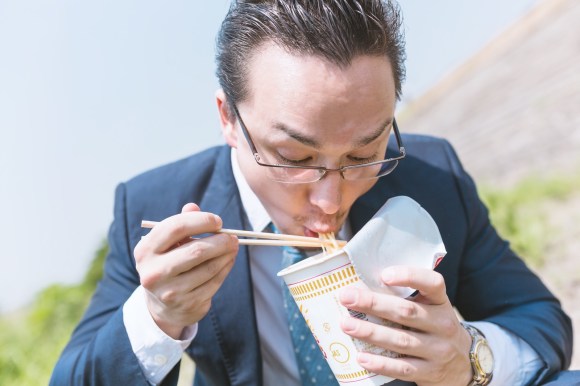
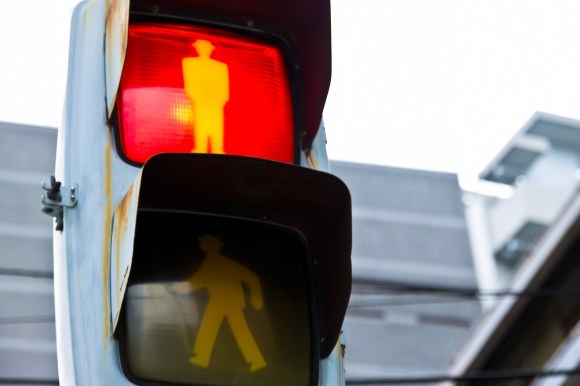
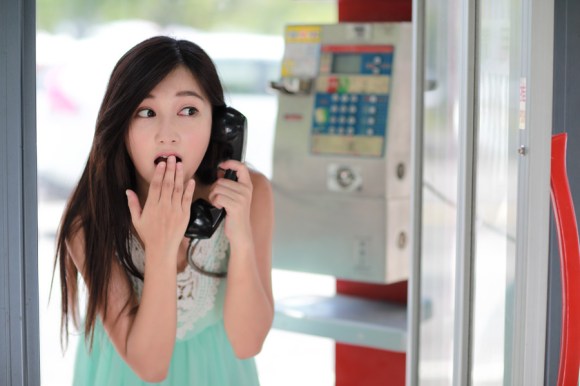
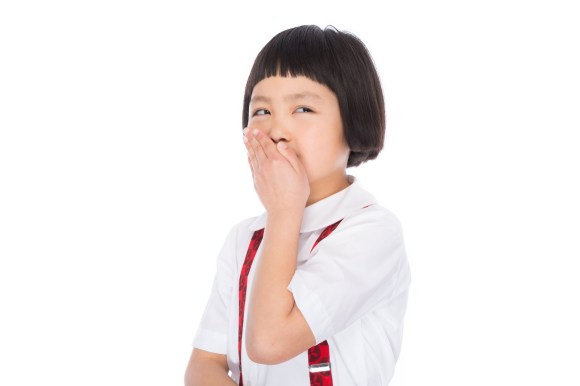
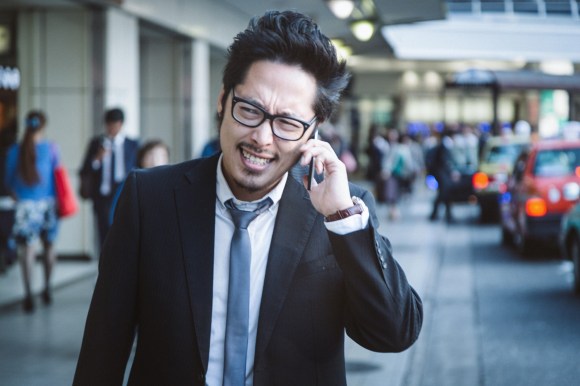
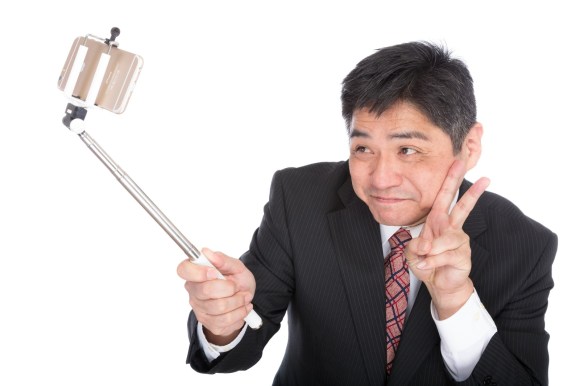
 Japanese survey finds only 23 percent of vehicles stop for pedestrians at crosswalks
Japanese survey finds only 23 percent of vehicles stop for pedestrians at crosswalks W.T.F. Japan: Top 5 offbeat Japanese animal cafes【Weird Top Five】
W.T.F. Japan: Top 5 offbeat Japanese animal cafes【Weird Top Five】 W.T.F. Japan: Top 5 most difficult kanji ever【Weird Top Five】
W.T.F. Japan: Top 5 most difficult kanji ever【Weird Top Five】 Anime’s Tetsuwan Atom/Astro Boy shows up on a pedestrian walk signal in Japan
Anime’s Tetsuwan Atom/Astro Boy shows up on a pedestrian walk signal in Japan University of Tokyo lecturer suggests giving cars big cartoon eyes will make them safer
University of Tokyo lecturer suggests giving cars big cartoon eyes will make them safer Foreigner’s request for help in Tokyo makes us sad for the state of society
Foreigner’s request for help in Tokyo makes us sad for the state of society Red light district sushi restaurant in Tokyo shows us just how wrong we were about it
Red light district sushi restaurant in Tokyo shows us just how wrong we were about it Japanese city loses residents’ personal data, which was on paper being transported on a windy day
Japanese city loses residents’ personal data, which was on paper being transported on a windy day Anime girl English teacher Ellen-sensei becomes VTuber/VVTUber and NFT
Anime girl English teacher Ellen-sensei becomes VTuber/VVTUber and NFT Tokyo Tsukiji fish market site to be redeveloped with 50,000-seat stadium, hotel, shopping center
Tokyo Tsukiji fish market site to be redeveloped with 50,000-seat stadium, hotel, shopping center McDonald’s new Happy Meals offer up cute and practical Sanrio lifestyle goods
McDonald’s new Happy Meals offer up cute and practical Sanrio lifestyle goods Historical figures get manga makeovers from artists of Spy x Family, My Hero Academia and more
Historical figures get manga makeovers from artists of Spy x Family, My Hero Academia and more McDonald’s creates a dream Japanese bento for April Fools’ Day
McDonald’s creates a dream Japanese bento for April Fools’ Day Ghibli Park now selling “Grilled Frogs” from food cart in Valley of Witches
Ghibli Park now selling “Grilled Frogs” from food cart in Valley of Witches Pokémon Sleep camping suite and guestrooms coming to Tokyo Hyatt along with giant Snorlax burgers
Pokémon Sleep camping suite and guestrooms coming to Tokyo Hyatt along with giant Snorlax burgers Japanese ramen restaurants under pressure from new yen banknotes
Japanese ramen restaurants under pressure from new yen banknotes All-you-can-drink Starbucks and amazing views part of Tokyo’s new 170 meter-high sky lounge
All-you-can-drink Starbucks and amazing views part of Tokyo’s new 170 meter-high sky lounge French Fries Bread in Tokyo’s Shibuya becomes a hit on social media
French Fries Bread in Tokyo’s Shibuya becomes a hit on social media Studio Ghibli releases new action figures featuring Nausicaä of the Valley of the Wind characters
Studio Ghibli releases new action figures featuring Nausicaä of the Valley of the Wind characters New private rooms on Tokaido Shinkansen change the way we travel from Tokyo to Kyoto
New private rooms on Tokaido Shinkansen change the way we travel from Tokyo to Kyoto Studio Ghibli glasses cases let anime characters keep an eye on your spectacles
Studio Ghibli glasses cases let anime characters keep an eye on your spectacles Beautiful Ghibli sealing wax kits let you create accessories and elegant letter decorations【Pics】
Beautiful Ghibli sealing wax kits let you create accessories and elegant letter decorations【Pics】 Studio Ghibli releases Kiki’s Delivery Service chocolate cake pouches in Japan
Studio Ghibli releases Kiki’s Delivery Service chocolate cake pouches in Japan New definition of “Japanese whiskey” goes into effect to prevent fakes from fooling overseas buyers
New definition of “Japanese whiskey” goes into effect to prevent fakes from fooling overseas buyers Our Japanese reporter visits Costco in the U.S., finds super American and very Japanese things
Our Japanese reporter visits Costco in the U.S., finds super American and very Japanese things Studio Ghibli unveils Mother’s Day gift set that captures the love in My Neighbour Totoro
Studio Ghibli unveils Mother’s Day gift set that captures the love in My Neighbour Totoro New Japanese KitKat flavour stars Sanrio characters, including Hello Kitty
New Japanese KitKat flavour stars Sanrio characters, including Hello Kitty More foreign tourists than ever before in history visited Japan last month
More foreign tourists than ever before in history visited Japan last month New Pokémon cakes let you eat your way through Pikachu and all the Eevee evolutions
New Pokémon cakes let you eat your way through Pikachu and all the Eevee evolutions Sales of Japan’s most convenient train ticket/shopping payment cards suspended indefinitely
Sales of Japan’s most convenient train ticket/shopping payment cards suspended indefinitely Sold-out Studio Ghibli desktop humidifiers are back so Totoro can help you through the dry season
Sold-out Studio Ghibli desktop humidifiers are back so Totoro can help you through the dry season Japanese government to make first change to romanization spelling rules since the 1950s
Japanese government to make first change to romanization spelling rules since the 1950s Ghibli founders Toshio Suzuki and Hayao Miyazaki contribute to Japanese whisky Totoro label design
Ghibli founders Toshio Suzuki and Hayao Miyazaki contribute to Japanese whisky Totoro label design Doraemon found buried at sea as scene from 1993 anime becomes real life【Photos】
Doraemon found buried at sea as scene from 1993 anime becomes real life【Photos】 Tokyo’s most famous Starbucks is closed
Tokyo’s most famous Starbucks is closed One Piece characters’ nationalities revealed, but fans have mixed opinions
One Piece characters’ nationalities revealed, but fans have mixed opinions We asked a Uniqlo employee what four things we should buy and their suggestions didn’t disappoint
We asked a Uniqlo employee what four things we should buy and their suggestions didn’t disappoint Princesses, fruits, and blacksmiths: Study reveals the 30 most unusual family names in Japan
Princesses, fruits, and blacksmiths: Study reveals the 30 most unusual family names in Japan Seven mistakes foreigners make when speaking Japanese—and how to fix them
Seven mistakes foreigners make when speaking Japanese—and how to fix them Five things about New York that surprised our Japanese reporter
Five things about New York that surprised our Japanese reporter Should saying thanks at a Japanese convenience store go without saying?
Should saying thanks at a Japanese convenience store go without saying? “Common habits of Japan’s low earners”: What this survey tells us, and what it doesn’t
“Common habits of Japan’s low earners”: What this survey tells us, and what it doesn’t Japanese custom of bowing to cars at crosswalks keeps locals safe, warms Internet’s hearts【Video】
Japanese custom of bowing to cars at crosswalks keeps locals safe, warms Internet’s hearts【Video】 Is Japan’s custom of slurping noodles irritating, and why do they do it?【SN24 reader survey】
Is Japan’s custom of slurping noodles irritating, and why do they do it?【SN24 reader survey】 Pet hamster shows off eloquent eating skills that puts most humans to shame
Pet hamster shows off eloquent eating skills that puts most humans to shame Seven facts about Japanese chopsticks to help you win friends and influence people
Seven facts about Japanese chopsticks to help you win friends and influence people Google’s three most-searched Japanese foods in other countries surprises Japan
Google’s three most-searched Japanese foods in other countries surprises Japan Online poll ranks JoJo’s Bizarre Adventures most bizarre sound effects
Online poll ranks JoJo’s Bizarre Adventures most bizarre sound effects Driver who killed cyclist in crosswalk accident found not guilty, causes controversy in Japan
Driver who killed cyclist in crosswalk accident found not guilty, causes controversy in Japan “Dr. Fruit” or “How Japan Learned to Stop Worrying and Love the Peel”
“Dr. Fruit” or “How Japan Learned to Stop Worrying and Love the Peel” The twin joys and dual sadnesses of eating ramen in the U.S.
The twin joys and dual sadnesses of eating ramen in the U.S. Over half of Japanese adults do this in the shower – How about you?
Over half of Japanese adults do this in the shower – How about you? Clever ad publicly shames commuters in real-time for “smartphone walking” in train station【Video】
Clever ad publicly shames commuters in real-time for “smartphone walking” in train station【Video】 6 surprising things about having a baby in Japan
6 surprising things about having a baby in Japan
Leave a Reply